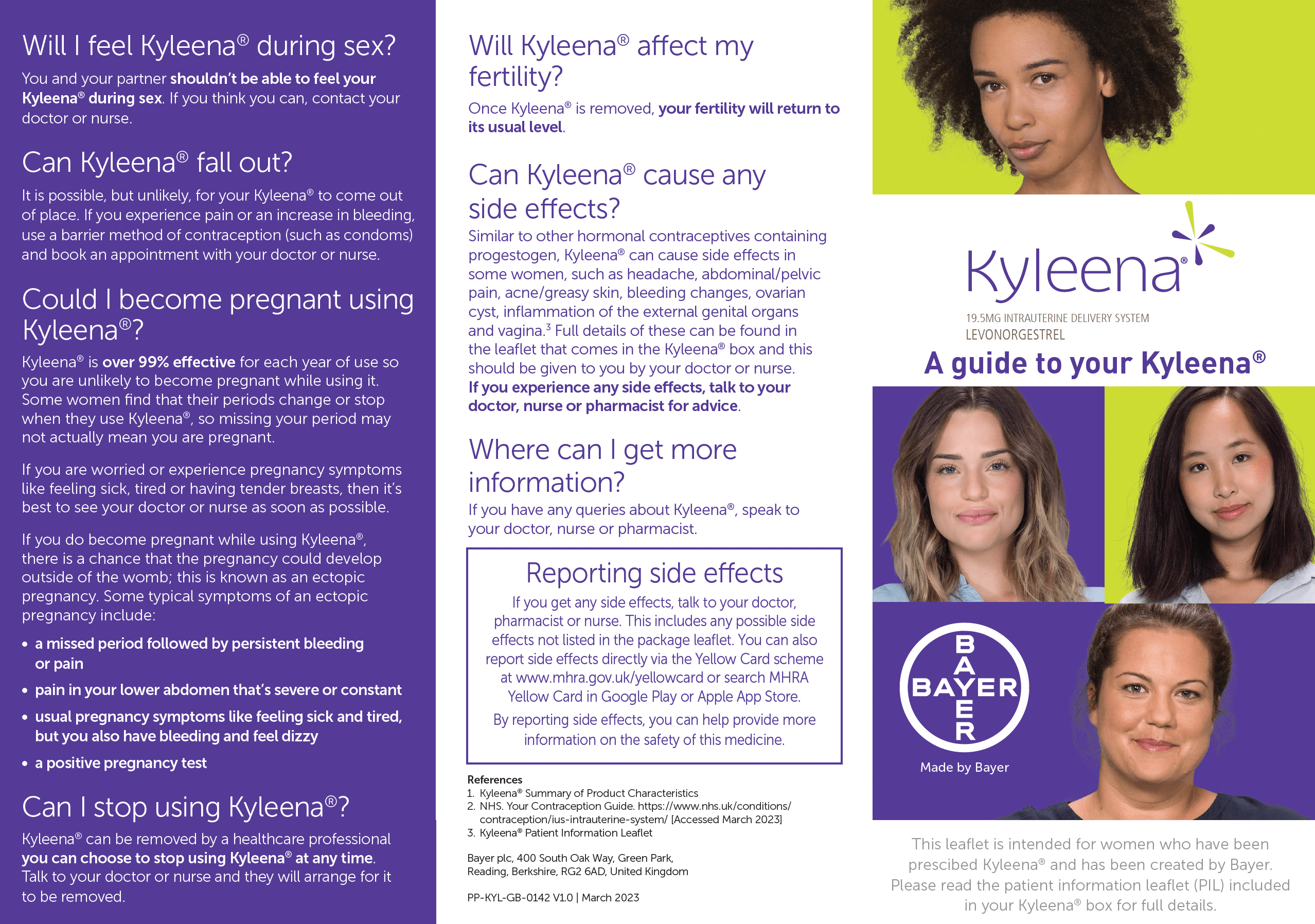INDICATION FOR KYLEENA
Kyleena® (levonorgestrel-releasing intrauterine system) is a hormone-releasing IUS that prevents pregnancy for up to 5 years.
IMPORTANT SAFETY INFORMATION
- If you have an untreated genital infection, get infections easily, or have certain cancers, don't use Kyleena. Less than 1% of users get a serious pelvic infection called pelvic inflammatory disease (PID).
- If you have persistent pelvic or stomach pain, excessive bleeding after placement or if Kyleena comes out, tell your healthcare professional (HCP). If Kyleena comes out, call your HCP and avoid intercourse or use non-hormonal back-up birth control (such as condoms or spermicide). Kyleena may go into or go through the uterus and cause other problems.
- Pregnancy while using Kyleena is uncommon but can be life threatening and may result in loss of pregnancy or fertility.
- Ovarian cysts may occur but usually disappear.
- Bleeding and spotting may increase in the first 3 to 6 months and remain irregular. Periods over time usually become shorter, lighter, or may stop.
Kyleena does not protect against HIV or STIs.
Only you and your HCP can decide if Kyleena is right for you. Kyleena is available by prescription only.
For important risk and usage information about Kyleena, please see Patient information leaflet
Reporting adverse events and quality complaints
If you get any side effects talk to your doctor, pharmacist, nurse or healthcare professional. This includes any possible side effects not listed in this leaflet. You can also report side effects directly via the Yellow Card Scheme at https://yellowcard.mhra.gov.uk or search for MHRA Yellow Card in Google Play or Apple App Store. By reporting side effects you can help provide more information on the safety of this medicine. Please report information of when Kyleena was inserted and removed, as applicable.








